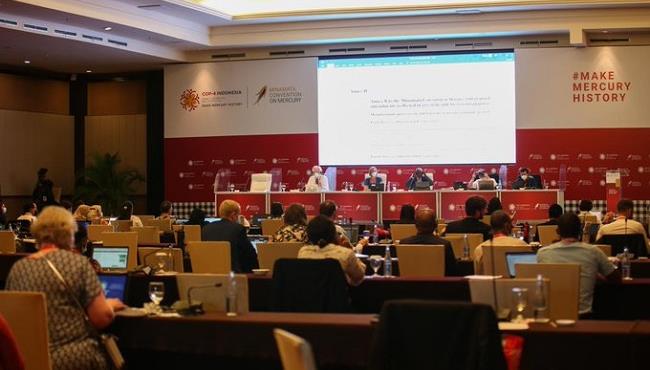The resumed Fourth Meeting of the Conference of the Parties (COP 4.2) to the Minamata Convention on Mercury that took place from March 21 to 25, 2022, in Bali, Indonesia, adopted 11 decisions that set the course of implementation of the Convention in the years to come.

Some of the decisions included those on artisanal and small-scale mining, phasing out products containing mercury, waste containing mercury, and the effectiveness evaluation of the Convention.
Nine years after its adoption, and five years after its entry into force, the Minamata Convention on Mercury is still a relative newcomer to the galaxy of multilateral environmental agreements. Parties are at the stage where detailed negotiations on a whole range of commitments are needed, especially since deadlines, agreed at the outset, are looming large.
COP 4.2 marked the first appearance of artisanal and small-scale mining (ASGM) on the agenda since COP-1. ASGM represents the largest source of mercury emissions into the environment, even more than emissions from coal-fired power plants, which come second.
In ASGM, the application of mercury for processing of the ore affects many people around the world, including some in remote communities, women of childbearing age, and child miners.
Indigenous Peoples’ testimonies moved the needle on ASGM national action plans, whereby parties agreed to consult with Indigenous Peoples and local communities in the development of these plans under the Convention.
The meeting also highlighted the wide range of products that account for mercury in the environment, and the levels of human exposure. Detailed negotiations on products from lamps to dental amalgam focused on how and when countries will eliminate the use of mercury-added products and processes.
The Minamata Convention covers the whole life cycle of mercury and thus, the negotiations addressed many important issues from reporting on sources, export and intended uses, to preparing inventories of point sources to setting thresholds for determining when mercury-contaminated wastes require special management.
Parties took steps towards setting up the first “effectiveness evaluation” of the Convention, which will assess the real impacts of parties’ efforts. Negotiations on the specific terms of reference were often heated, but parties eventually reached agreement on the basic steps towards the first real test of the Minamata Convention’s value.
COP 4.2 also approved the budget and programme of work for the next biennium and also set the terms of reference for the next review of its financial mechanism.
Also introduced by the Indonesian Presidency of COP-4 and adopted by heads of delegation at COP-4.2 was the Bali Declaration on Illegal Trade in Mercury. While non-binding, the Declaration is intended as a strong statement of collective will to address a growing problem.
During the meeting, speakers drew attention to developments relevant to mercury in the broader international relations environment. These included the United Nations Environment Assembly’s agreement to establish an intergovernmental science-policy panel on chemicals and waste, similar to those that already exist for climate and biodiversity.
Delegates also highlighted the human rights dimension of pollution, and the Human Rights Council’s recent recognition of the right to a healthy environment.
Action on mercury, if parties are successful in their implementation of the Minamata Convention, will go a long way towards tackling the human and environmental costs of mercury.
When COP-4.2 opened on Monday, March 21, high level officials and regional representatives highlighted the context in which COP-4.2 was taking place, identified entry points in global sustainable development policy processes that can be used to leverage the success of the Minamata Convention, and encouraged delegates to strive to reach agreement on all agenda items in order to keep the Convention on track to meet its deadlines and to enable parties to fulfill the Convention’s obligations.
Wayan Koster, Governor, Bali, Indonesia, welcomed delegates and expressed strong support for international efforts to reduce and eliminate mercury.
Monika Stankiewicz, Executive Secretary, Minamata Convention, provided an overview of the ambitious agenda for COP-4.2, and called for special attention to the UNEP Executive Director’s recommendations to strengthen the Convention’s SIP on capacity building and technical assistance.
UNEP Executive Director, Inger Andersen, drew attention to the recently concluded Fifth UN Environment Assembly (UNEA-5), which agreed to establish a science-policy panel on the sound management of chemicals and waste. She noted how this will impact the Minamata Convention’s work.
Siti Nurbaya Bakar, Minister of Environment and Forestry, Indonesia, expressed hope that COP-4.2 would allow parties to “bridge our differences and expand our similarities” on key issues such as the effectiveness evaluation. She explained that an “alarming increase” in global illegal mercury trade prompted Indonesia to propose a nonbinding Bali Declaration on combating such trade.
COP-4 President Rosa Vivien Ratnawati, Indonesia, noted that, despite pandemic challenges, “no action is not an option.”
